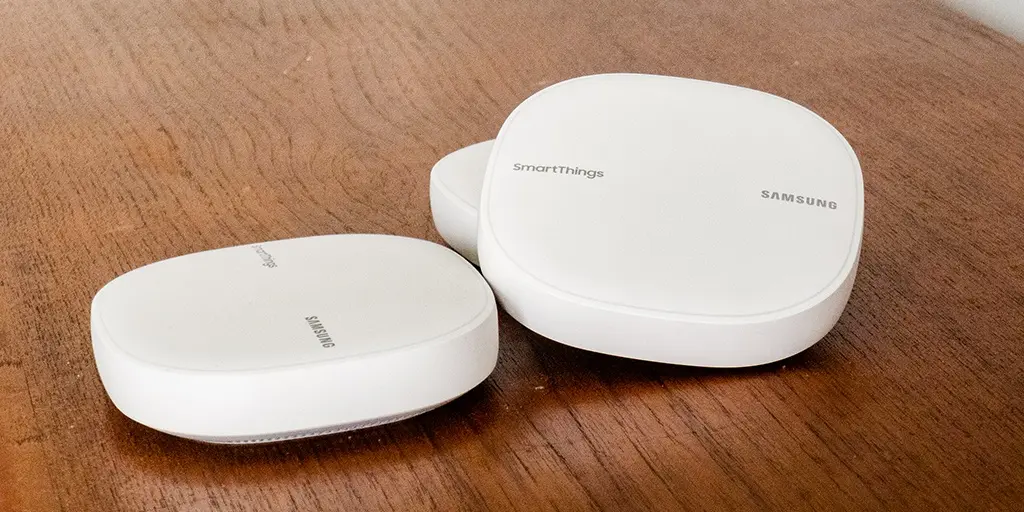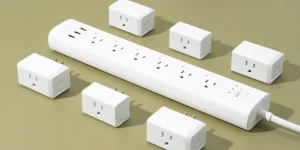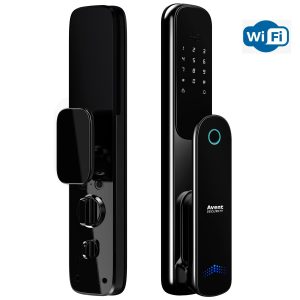Smart Home Hub: What It Does, How It Works, Applications, and Safe Usage Tips

A smart home hub serves as the central brain of a connected home, integrating all the smart devices and allowing you to control them in one unified platform. Whether you want to automate daily tasks or enhance your home’s security, a smart home hub is the key to simplifying and centralizing your home automation experience. In this article, we will explore what a smart home hub does, how it works, where it’s used, and how to use it safely.
1. What Does a Smart Home Hub Do? (Introduction, Popular Types, and Uses)
A smart home hub is a device that acts as the central point for controlling and coordinating various smart devices in your home. It connects with various smart appliances such as lights, thermostats, security cameras, and speakers, allowing you to manage them from one location, typically through a smartphone app or voice assistant.
Popular Types of Smart Home Hubs:
- Amazon Echo: With built-in Alexa, Amazon Echo acts as a voice-controlled hub that can manage a wide range of smart devices and automate daily tasks.
- Google Nest Hub: Powered by Google Assistant, this hub can control compatible devices, play music, provide information, and automate your home using voice commands.
- Apple HomePod: Apple’s smart hub, integrated with Siri, controls HomeKit-enabled devices, providing seamless integration for Apple users.
- Samsung SmartThings: A more versatile option that connects a wide range of smart devices and allows for detailed automation setups.
Key Benefits:
- Centralized Control: A smart home hub enables you to control all your connected devices from a single platform, whether it’s through an app or voice commands.
- Automation: It allows you to create schedules, triggers, and routines, making your home more energy-efficient and comfortable.
- Enhanced Security: By integrating with cameras, locks, and sensors, a smart home hub can provide better monitoring and security for your home.
- Convenience: Whether you’re at home or away, you can control lights, appliances, and security features remotely.
2. How Does a Smart Home Hub Work? (Principle of Operation and Key Components)
A smart home hub works by using wireless protocols to communicate with and manage various connected devices in your home. It acts as a bridge between your devices and the network, enabling communication and control.
Key Components of a Smart Home Hub:
- Wireless Connectivity: The hub typically uses Wi-Fi, Bluetooth, Zigbee, or Z-Wave to connect to different smart devices. These protocols ensure seamless communication across multiple devices.
- Processor: The hub’s processor manages the commands and automations, ensuring that all devices work together smoothly.
- App or Voice Assistant: The hub interfaces with an app on your smartphone or a voice assistant, such as Alexa, Google Assistant, or Siri, to allow for remote control and voice commands.
- Integration with Smart Devices: The hub connects to smart devices like lights, thermostats, cameras, and more, allowing them to work in sync according to the user’s preferences or automation setups.
How It Works:
- Device Connection: The smart home hub connects to various devices, either through direct connection or a home automation system like Zigbee or Z-Wave.
- Central Control: Once connected, the hub allows users to control the devices from a single platform, like a mobile app or through voice assistants.
- Automation: Users can set triggers and routines so that devices perform certain actions based on time, movement, or other inputs.
- Monitoring and Notifications: The hub can monitor devices and send notifications if there’s a security breach or if something needs attention (like a sensor detecting motion or a smoke alarm going off).
3. Where Are Smart Home Hubs Used? (Practical Applications)
Smart home hubs are used in various settings to automate, secure, and simplify home management. Their flexibility makes them a popular choice for homeowners who want to enhance their living experience.
Common Applications of Smart Home Hubs:
- Home Automation: Smart home hubs are used to control various devices like lighting, thermostats, and door locks, creating a more efficient and comfortable living environment.
- Energy Management: Hubs can automate the turning on and off of lights, appliances, and heating/cooling systems to reduce energy consumption and save money on utility bills.
- Security and Surveillance: By integrating security cameras, motion sensors, and smart doorbells, hubs can help monitor and secure your home, providing peace of mind.
- Voice-Controlled Devices: Hubs connected to voice assistants like Alexa or Google Assistant allow hands-free control of devices, making it easier to manage your home.
- Entertainment: They can integrate with smart TVs, speakers, and media systems, allowing you to control entertainment devices from one location.
Real-Life Examples:
- Smart Lighting: Schedule lights to turn on and off at specific times or use motion sensors to automate lighting in certain areas.
- Security Alerts: Get alerts when your security cameras detect motion or when your door locks are engaged or disengaged.
- Climate Control: Automatically adjust your thermostat to maintain the desired temperature or program your system to save energy when you’re not home.
- Home Entertainment Control: Integrate your smart TV and speakers with your hub to control media playback, volume, and settings with your voice or app.
4. How to Use a Smart Home Hub Safely (Safety Tips and Important Considerations)
Smart home hubs make your life easier, but they also require careful handling to ensure they operate safely and securely. Here are some safety guidelines to keep in mind.
Safety Tips for Using a Smart Home Hub:
- Secure Your Network: Since your smart hub connects to your home network, it’s crucial to secure it with a strong password and enable encryption (e.g., WPA3) to protect against unauthorized access.
- Regular Software Updates: Manufacturers often release updates to improve security and add features. Always keep your hub’s software up to date to avoid vulnerabilities.
- Monitor Connected Devices: Regularly check the devices connected to your hub to ensure there are no unauthorized additions. Some hubs allow you to monitor the health of devices and their connections.
- Use Trusted Brands: Choose reputable brands and systems that prioritize privacy and security. Opt for hubs with strong user reviews and certifications.
- Limit Permissions: Be mindful of what information your hub and connected devices access. Limit access to sensitive data and ensure only trusted devices can connect.
Important Considerations:
- Compatibility: Before purchasing a smart home hub, check the compatibility with the devices you plan to use. Not all hubs support every type of device or system.
- Data Privacy: Since hubs collect data from various devices, ensure you understand what data is being collected and how it’s being used. Check for privacy policies from the manufacturer.
- Voice Assistants: If your hub integrates with voice assistants, be cautious about voice-activated commands to avoid accidental actions or unauthorized access.
Conclusion
A smart home hub is an essential device for anyone looking to create a connected, automated home. With the ability to control, monitor, and automate various smart devices, it simplifies everyday tasks and enhances home security and energy efficiency. By understanding how they work, knowing where they can be applied, and following safety guidelines, you can take full advantage of this technology while keeping your home secure and efficient.






